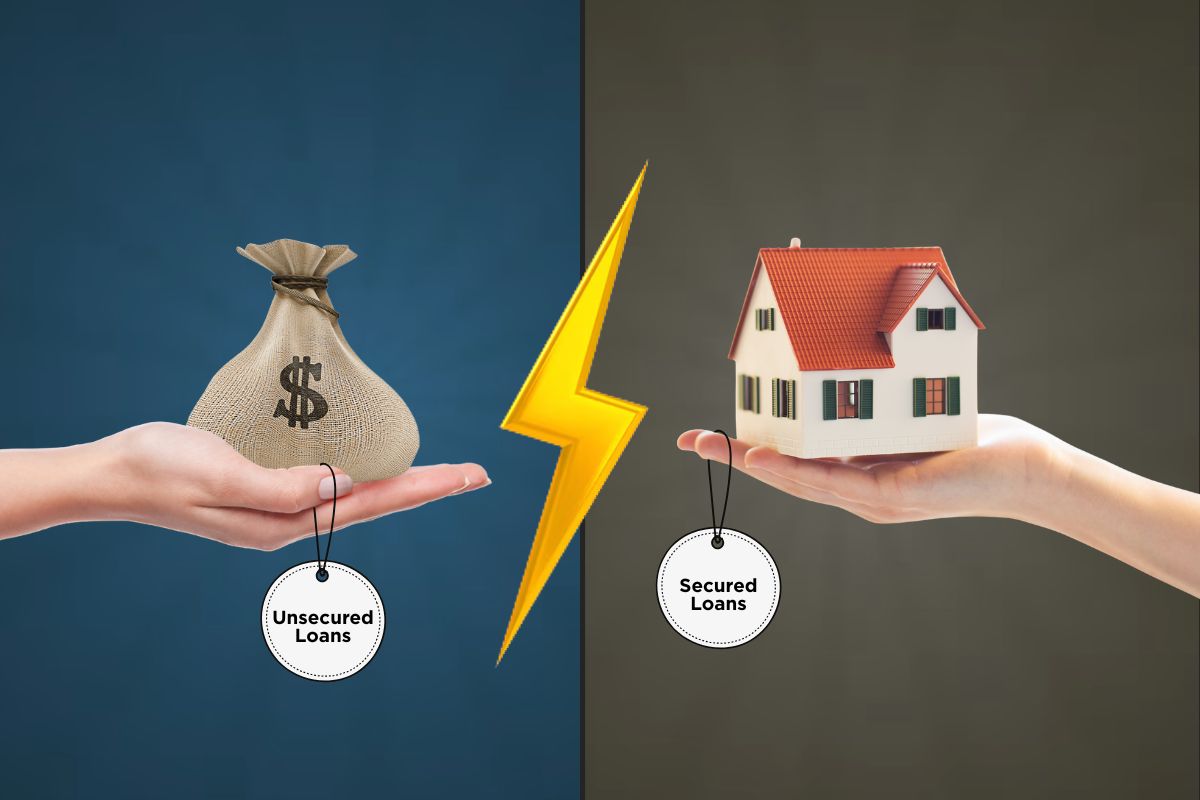If you’ve ever borrowed money—or even just thought about it—you’ve probably bumped into the words “secured” and “unsecured.” They sound kind of stiff, right? But honestly, the idea’s not that complicated. It all boils down to one key thing: collateral.
Let’s break it down. What do these terms actually mean? How do they work? And, maybe most important, which one makes more sense for you?
Secured Vs. Unsecured Loans: What’s The Real Difference?
What Is A Secured Loan?
A secured loan is basically a deal backed by something valuable you already own—like your car, your house, or maybe some savings. That thing acts as a safety blanket for the lender. If you don’t pay them back (and hopefully you do), they can take that asset to recover their money. Not fun, but that’s how it works.
Common Examples:
-
Mortgage: Your home’s on the line.
-
Auto Loan: The car you’re buying is the backup.
-
Home Equity Loan: You’re borrowing against your home’s value.
-
Secured Credit Card: You put down cash first as a deposit, just in case.
So yeah, with secured loans, there’s real skin in the game—yours.
What Is An Unsecured Loan?
Now, unsecured loans are the opposite. No collateral here. Instead, lenders are betting on your reputation—your credit score, income, and how responsible you’ve been with money in the past.
Common Examples:
-
Personal Loan: For stuff like weddings, emergencies, or a quick getaway.
-
Credit Cards: No assets tied up, but the interest can sting if you don’t pay.
-
Student Loans: Usually unsecured, though some have government backing.
-
Unsecured Business Loans: Handy for startups or small businesses that don’t have property to put on the line.
So it’s basically trust versus collateral. One’s about what you own, the other’s about what you earn and how you manage it.
Side-By-Side Comparison
| Feature | Secured Loan | Unsecured Loan |
|---|---|---|
| Collateral Required | Yes (like your house or car) | No |
| Interest Rate | Lower | Higher |
| Loan Amount | Higher | Lower |
| Approval Time | Longer (they’ve got to check the asset) | Faster |
| Risk To Borrower | You might lose the asset | No asset loss, but your credit takes a hit |
| Credit Score Importance | Less crucial | Super important |
| Typical Use | Homes, cars, big buys | Emergencies, smaller needs |
Sources: Investopedia, Olyv
Interest Rates: A Real-World Look
Interest rates are all over the place. They depend on your credit, income, and even the mood of the market that week (well, sort of). But here’s a rough idea:
| Loan Type | Average Interest Rate (2025) |
|---|---|
| Mortgage (Secured) | 6.5% |
| Auto Loan (Secured) | 7.0% |
| Personal Loan (Unsecured) | 11%–25% |
| Credit Card (Unsecured) | 20%–30% |
Rates shift constantly, and they’re heavily influenced by your credit score and how lenders feel about risk. So if your credit’s good, congrats—you’ll likely snag a better deal.
Pros And Cons
Secured Loans
Pros:
-
Lower interest rates (big win)
-
Larger loan amounts
-
Longer repayment periods
Cons:
-
You could lose your asset, which is rough
-
More paperwork (ugh)
-
Slower approval
Unsecured Loans
Pros:
-
No collateral required
-
Quick approval—sometimes in a day or two
-
Less hassle overall
Cons:
-
Higher interest rates
-
Smaller borrowing limits
-
Credit score matters. A lot.
So yeah, both have their perks and pitfalls. It’s all about what you’re comfortable risking.
Which One Should You Choose?
Honestly, it depends.
If you’re eyeing a big purchase like a car or house, a secured loan makes sense. That’s what they’re built for. But if you just need a quick chunk of cash for something urgent—say, a medical bill or a spontaneous trip—then unsecured might be your friend.
Got great credit but not much to put up as collateral? Unsecured could work. On the flip side, if your credit’s shaky but you’ve got valuable assets, a secured loan might open doors lenders would otherwise keep closed.
So yeah—it’s situational. There’s no one-size-fits-all here.
Real-Life Scenarios
Scenario 1: Buying a Home
Let’s say you want a $300,000 house. You apply for a mortgage—a secured loan. The house itself is collateral. Because of that, you’ll probably get a lower rate and a longer term, like 30 years. Not bad, right?
Scenario 2: Emergency Medical Bill
Now picture this: you need $5,000 fast. You go for an unsecured personal loan. No collateral needed, but brace yourself for higher interest and a shorter repayment period—usually 2 to 5 years. It’s quick, though, and sometimes that’s what matters most.
Final Thoughts
Both loan types have their place. Secured loans are your go-to for big, long-term things—like buying a home or car. Unsecured loans? They’re perfect for quick, short-term needs when you just can’t wait.
Just keep one thing in mind—when you go unsecured, your credit score basically becomes the collateral. So take care of it.
And hey, if you’d like help comparing lenders or figuring out your monthly payments, I can totally help with that. Or if you’re curious about how your credit score ties into all this—we can dig into that next.


